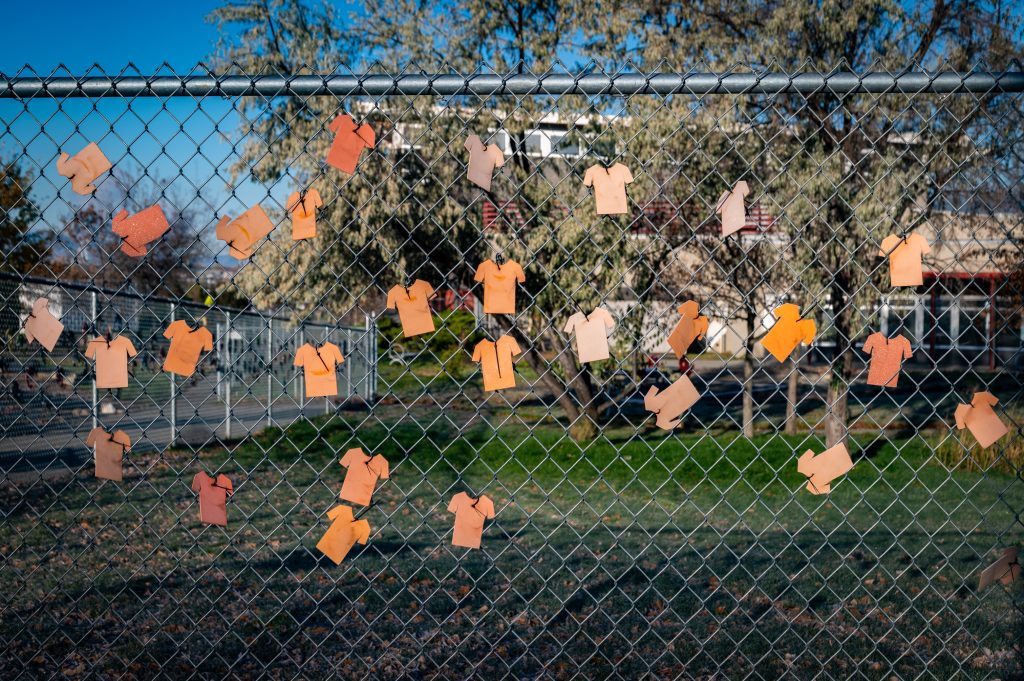Introduction
For First Nations, Inuit and Métis peoples in Canada, the legacy of colonialism and the intergenerational trauma it has induced continues to create a particular barrier to educational attainment. Education, as both an academic system and a personal journey, becomes a place where trauma continues to be perpetuated. For many Indigenous peoples, the intergenerational trauma they have experienced is an additional barrier to accessing education. This blog examines what intergenerational trauma is and how it uniquely impacts Indigenous Peoples’ educational outcomes.
What is Intergenerational Trauma?
Intergenerational trauma is a distinct type of trauma that is passed down through generations within the family dynamic. It can stem from an intensely negative experience that affects a person psychologically, spiritually, and physically.
Intergenerational trauma transmission is not intentional. Trauma transmission is when the pain and effects of trauma are passed down from parents to children. It is subconscious, carried through behaviours and coping mechanisms stemming from the initial traumatic event. People often repeat what they know, not because they want to cause harm, but because that is what they have been taught.
This type of trauma is not isolated to the individual. It is embedded in family systems, community structures, and institutional experiences. Over generations, the effects of trauma grow and influence every aspect of life, including how individuals perceive themselves and the world around them.
Residential Schools and Intergenerational Trauma
From 1831 to 1997, First Nations, Inuit, and Métis children were forcibly removed from their families, cultures, and lifeways and placed in Indian Residential Schools. The Truth and Reconciliation Commission of Canada (TRC) described residential schools as “a systemic, government-sponsored attempt to destroy Aboriginal cultures and languages and to assimilate Aboriginal peoples so that they no longer exist as distinct peoples.”
These institutions were not places of learning. Instead, for 166 years, they obliterated Indigenous cultures, languages, and identities through assimilation, abuse, and isolation, severing the transmission of cultures, traditions, and knowledge between generations. The deep, complex, and multi-layered trauma is still felt deeply today.

The separation from a nurturing family environment left many Survivors ill-equipped to raise their children with the emotional, cultural, and educational support they themselves were denied. Survivors often experience psychological challenges such as anger, anxiety, low self-esteem, and depression. These challenges affect not only their lives but are unintentionally passed down to the next generation, continuing cycles of trauma and disconnection. By cutting off cultural continuity, children were denied not only their traditions but also the emotional stability that comes from kinship and community connection.
Parents raised without love and safety struggle to provide it to their own children, who in turn face their own, unique challenges. The trauma evolves, transforms, and includes continued psychological suffering but also socioeconomic marginalization, substance abuse, unstable family dynamics, and mistrust of institutions.
Disruption in Education
According to Statistics Canada, the high school graduation rate among Indigenous Peoples is significantly lower than that of the non-Indigenous population. This educational disparity is not caused by a lack of ability or effort among Indigenous students but stems from deeply embedded systemic inequalities rooted in colonialism.
Many Indigenous students today are the child, grandchild, or great-grandchild of Residential School Survivors. Their relationship with education is shaped by stories of abuse, assimilation, and exclusion shape their relationship with education. Trauma responses, like absenteeism, lack of self-confidence, disengagement, difficulty focusing, aggression, and avoidance of tasks, are often misinterpreted by educators who may be unfamiliar with trauma-informed practices. Rather than receiving support, students may be labelled as ‘disruptive’ or ‘unmotivated’.
| Population Group | High School Graduation Rate |
| Indigenous (overall) | 67% |
| Status First Nations | 61% |
| Non-Status First Nations | 72% |
| On-Reserve | 49% |
| Non-Indigenous | 83% |
Outside the classroom, factors like nutrition, home life, self-esteem, and socioeconomic status also strongly influence academic outcomes. Intergenerational trauma can affect all these areas. Many parents coping with their own trauma may not have the capacity or resources to fully support their children’s academic journey. The absence of academic support for Indigenous youth, disconnection from culture, identity, and sense of belonging, contributes to high rates of high school incompletion.
Children who experience early trauma are at higher risk for:
- Difficulty regulating emotions.
- Increased aggression or withdrawal.
- Learning disabilities, especially in language.
- Trouble focusing and sustaining attention.
- Mental health challenges in adolescence or adulthood.
Pathways Forward
Addressing intergenerational trauma is about understanding, not blame. When the historical and ongoing impacts are recognized, the narrative can shift from one of deficit to one of strength. Education must be transformed into an accessible, safe, and healing space.
Indigenous students deserve to be met with empathy, respect, and cultural affirmation. Educators should recognize the strengths and potential of every child, rejecting deficit-based perspectives. Schools must be places where Indigenous youth feel safe, valued, and supported. Achieving this requires systemic reform, genuine cultural appreciation, and restoring educational power to Indigenous communities and nations.

Education should serve as a pathway to healing and be accessible to all. Achieving this requires listening, learning, and, above all, action. With humility, care, and commitment, educators and institutions can ensure future generations of Indigenous children have the opportunity to learn and thrive. Intergenerational trauma creates a persistent cycle – education must be part of breaking that cycle, not perpetuating it.
- Culturally Relevant Education: Embedding Indigenous histories, worldviews, and ways of knowing into the curriculum to foster pride and identity. An example is Bedford Road Collegiate’s “Waskawīwin Land-Based Education” program for Grade 9 students, which acknowledges that learning occurs by creating and maintaining relationships between people and the land.
- Culturally Responsive Teaching: Building strong, respectful relationships with Indigenous students to ensure wholistic approaches to teaching.
- Trauma-Informed Practices: Training to recognize and compassionately address signs of trauma.
- Land-Based Education: Institutions embracing Indigenous pedagogies and recognizing Elders, Knowledge Keepers, and the land as educators.
- Family and Community Supports: Outside the classroom supports to address mental health, food security, and housing stability to break cycles of trauma.
Conclusion
Intergenerational trauma’s impact on education is profound, but it is not insurmountable. By acknowledging the past, addressing systemic inequities, and creating educational environments grounded in safety, respect, and cultural relevance, we can begin to dismantle the barriers it creates. Indigenous youth deserve access to education and the opportunity to thrive within it, all while being supported by systems that honour their histories, identities, and strengths. Through collective commitment and action, education can become a powerful tool for healing, resilience, and the restoration of Indigenous knowledge and pride.










Share the article